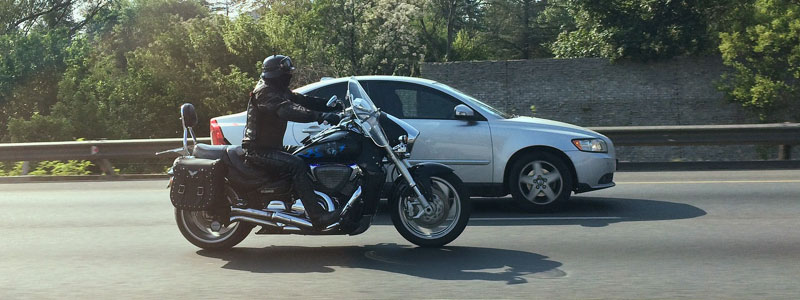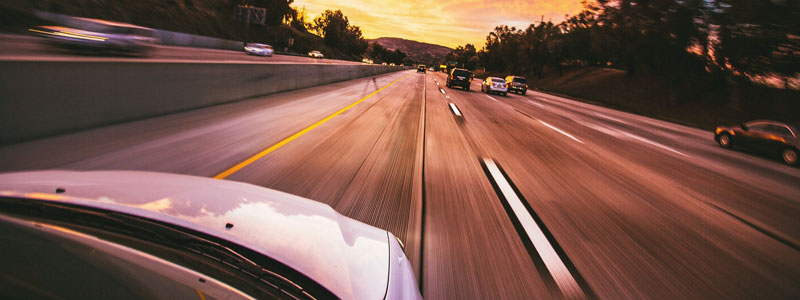Where Can I Seek Compensation After a Motorcycle Accident?
Self-driving cars aren’t just the future; they’re quickly become our present reality. Various companies have already taken to the streets to test their new technology. While every successful test revolutionizes the way we travel, every failure revolutionizes the way we handle accident injuries in the legal system. Such was the case when a self-driving car […]

March 7, 2018

Self-driving cars aren’t just the future; they’re quickly become our present reality. Various companies have already taken to the streets to test their new technology. While every successful test revolutionizes the way we travel, every failure revolutionizes the way we handle accident injuries in the legal system.
Such was the case when a self-driving car produced by General Motors collided with a motorcyclist in California in December 2017.
Injuries can be anywhere from minor to severe in a regular car accident, but they’re typically much worse in a motorcycle accident. That makes it even more important to know where you should seek compensation.
Whether or not the car that hits you is self-driving, from whom should you seek compensation for your injuries after a motorcycle accident?
If You’re Hit by a Self-Driving Car

Oscar Nilsson, the motorcyclist who was hit by the self-driving car in California, chose to sue General Motors. He was riding behind an autonomous Chevrolet Bolt when the car decided to switch to the left lane. As he proceeded forward, the Bolt abruptly aborted the lane-change and attempted to re-enter the right lane, knocking the motorcyclist to the ground.
This is where fault gets complicated. The police report cited Nilsson for passing on the right side when it wasn’t safe. However, even GM, in an attempt to put fault on Nilsson, acknowledged that Nilsson could have been lane splitting, a legal practice in California that allows motorcyclists to ride between lanes. (Lane splitting is illegal in Indiana.)
Nilsson’s attorney argues that the Bolt shouldn’t have aborted the lane change, and that the backup driver actually attempted to correct the error, but it was too late.
Because there’s no driver, the only entity you can attempt to hold responsible for your injuries after an accident with a self-driving car is the company that manufactured the car itself. In a way, this moves car accidents from simple personal injury cases (in which a person’s negligence hurts another person) to product liability cases (in which a company’s negligence hurts a person). The company would be responsible for your injuries in the same way they would be responsible if your airbag was defective, for example.
If You’re Hit By a Regular Car

If you get into a motorcycle accident with another regular vehicle, you’ll follow Indiana’s comparative fault rules. In Indiana, fault affects whose insurance company you can recover from. If you’re less than 51 percent at fault for the accident, you should be able to recover at least a portion of your damages from the other driver’s insurance company. The damages you can recover from the other driver’s insurance are reduced by the percentage you’re found to be at fault. For example, if you’re 10 percent at fault and you have $100,000 in damages, you’d only recover $90,000 from the at-fault driver’s insurance company.
If a Vehicle Causes You to Hit Another Vehicle or Object

No-contact car accidents occur when another vehicle’s reckless behavior causes you to crash into someone or something else. Because motorcycles are less stable than cars, you may end up crashing if you have to swerve to avoid another vehicle.
Who can you recover from if the driver who caused the accident simply drives on, oblivious to the damage they’ve left behind them? In no-contact car accidents, eyewitnesses are especially important. It will be difficult to prove that another vehicle caused your accident unless you have eyewitnesses or camera footage to back up your claim.
If you are able to prove that the phantom driver (the term for the driver who causes a no-contact car accident and leaves) is truly responsible, you may be able to track them down and seek compensation from their insurance company. This is incredibly difficult, however. You may have to resort to your own insurance instead of holding the phantom driver responsible for your injuries.
Help from an Indiana Motorcycle Accident Lawyer
Whether or not the car that hit you was driven by a person or a computer, you shouldn’t have to pay for a motorcycle accident you didn’t cause. Call Hensley Legal Group today or contact us online for a free conversation about your case.